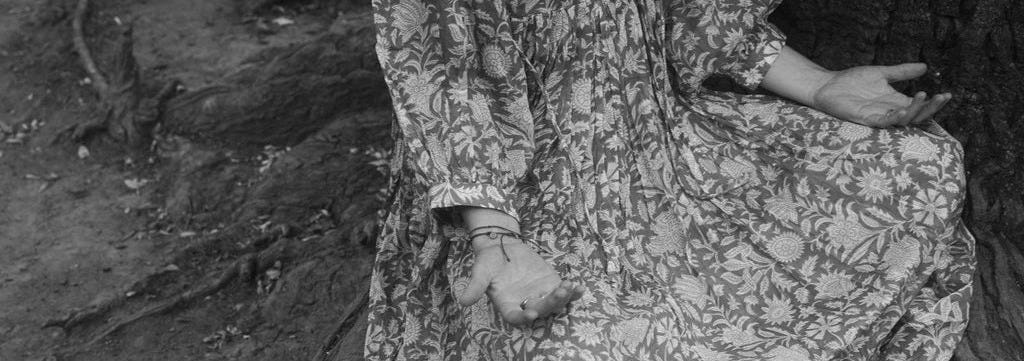I don’t know about you, but this “need to be seen” feels like a palpable energy—one I notice in myself and in others. It’s restless, urgent, ravenous. It can feel desperate, even insatiable. At times, it seems dangerous—like something that shouldn’t be handed the keys to drive the car. And yet, its impulses are hard to resist. It acts without thinking, blurting the words out before we’ve had time to reflect.
Why is this feeling so common?
Has it grown from the absence of micro-validations—those casual, everyday interactions that mirror us back to ourselves? Has it been amplified by remote work, social fragmentation, or our over-reliance on digital connection? Is it just one more symptom of a larger epidemic of isolation?
If I begin with what I know about myself, I can say this: I’ve often looked outside for comfort when I feel insecure—hoping, in some way, that someone else will do the emotional work I’m avoiding. I’m especially prone to this when I’m trying something new and vulnerable. That’s when I crave the outside affirmation most—to hear “You’re doing great””—bypassing the internal work of building confidence and worthiness on my own.
It’s important to say that the desire to be seen isn’t inherently unhealthy. In fact, it can be expansive. There’s a version of it that shows up when I’m creating something, still feeling tender, but also full of energy and excitement. This version shouts, “OVER HERE! LET ME SHOW YOU!”—not “Please tell me I’m okay.”
These two states may sound similar, but they feel entirely different. One is about connection. The other is about compensating for disconnection. Learning to recognize the difference matters. When we confuse them, we risk outsourcing our healing and missing the deeper transformation that can only come from doing the work ourselves.
So what is the difference between the need and the desire? The urgency and the want? Between seeking to be seen and the impulse to share your creativity, your voice, your truth?
The desire to share feels communal. It’s connective, not performative. The urgent need to be seen often arises from disconnection—a hunger for reflection after going too long without it. And in that space, it’s easy to turn to platforms in search of validation or orientation. But the catch is: it doesn’t actually satisfy. Screens can feel safer and more accessible than real relationships, but they rarely give us what we need.
When we commit to meaningful connection—with ourselves, with others, with something greater—we no longer crave mirroring in the same way. And we begin to offer compassion to the parts of ourselves that once needed someone else to confirm our worth, our enoughness, our right to exist just as we are.
That brings me to something the late Hilaree Nelson once said—something that’s stayed with me. Hilaree was a pioneering ski mountaineer and the first woman to summit two 8,000-meter peaks in a single 24-hour push. During a panel for Protect Our Winters, she spoke about the impact of her expeditions.
She described how those long journeys gave her stretches of time without screens—or reflective surfaces. That part caught my attention. She explained that without mirrors, without seeing her face or body, she began to feel more whole, more connected to herself. “You’re just as you are,” she said.
This gave me pause. What is the impact of constantly seeing ourselves? Is the compulsion to check—whether through a mirror or a screen—part of the growing urgency to be seen? Hilaree’s insight opened up something in me.
In the summer, when I’m out of routine and less exposed to mirrors or screens, I notice I’m more present, more engaged with my surroundings. I feel more grounded in my body. I rely on how I feel rather than how I look. If it feels good, it is good. Without constant visual feedback, I can actually hear myself.
What if we took Hilaree’s reflection as a metaphor, too?
What if it’s not just about physical mirrors—but emotional and identity mirrors as well? Maybe it’s good practice for all of us to step back from constant reflection—to take a break from needing to know ourselves only through the eyes of others.
When we rely too heavily on being mirrored, we begin to outsource our self-knowledge. Our identities start to bend toward what others want to see. We drift from our intuition, our inner knowing, our inherent wisdom. We forget that we are the experts on ourselves—that, when we get quiet enough to listen, we already know who we are.
So I offer this experiment to you, as I offer it to myself:
Could we look and seek just a little less?
Could we take a break from the mirrors—physical, emotional, or digital?
Could we grant ourselves the quiet needed to hear what’s inside?
Maybe just asking the question is enough to raise our awareness and bring us back. Maybe a pause is exactly what we need.
Let me know how it goes.





